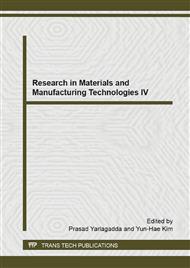p.3
p.7
p.13
p.17
p.23
p.30
p.35
p.39
Effect of Heat Treatment on Conductivity of Cu-1.0Cr-0.12Zr Alloy
Abstract:
Copper alloys with high strength and high conductivity are a serial of materials with excellent comprehensive performance. However, the strength and the conductivity are a pair of conflicting factors. To resolve this contradiction, Cu-1.0Cr-0.12Zr alloy was studied in this paper. With optical microscope, scanning electron microscope, Brinell hardness and the arms bridge, effects of heat treatment on microstructure and properties of such alloys was studied,and we strived to find a heat treatment processing to achieve the best match between the conductivity and the strength of the alloy. This paper focused on the study of conductive properties of the alloy. The main factor infuencing the conductivity of the alloy was the content of the soluting elements. The higher the content,the lower the conductivity, and vice versa. The results showed that the best comprehensive properties were obtained after solid solution at 920°C and then aging at 450°C for 180 min.
Info:
Periodical:
Pages:
7-12
Citation:
Online since:
December 2014
Authors:
Price:
Сopyright:
© 2015 Trans Tech Publications Ltd. All Rights Reserved
Share:
Citation:


